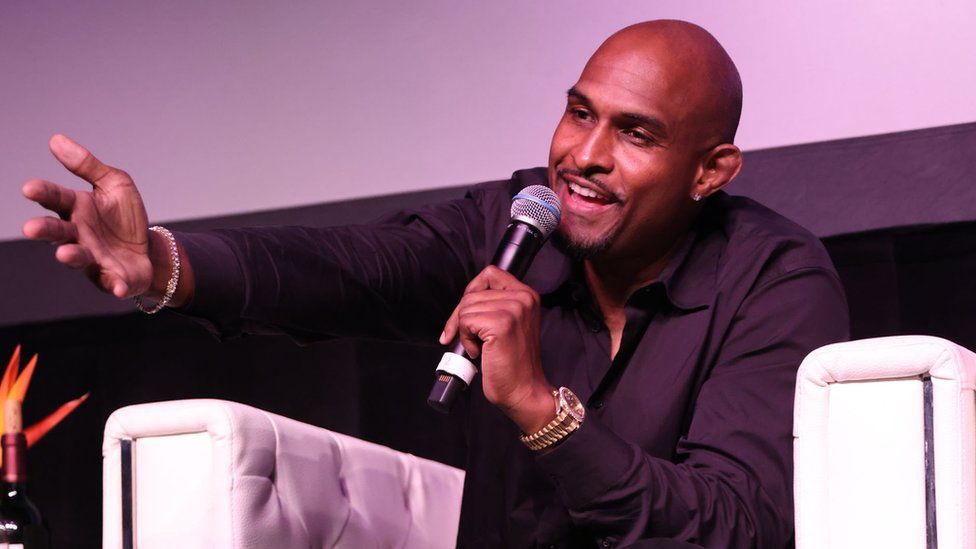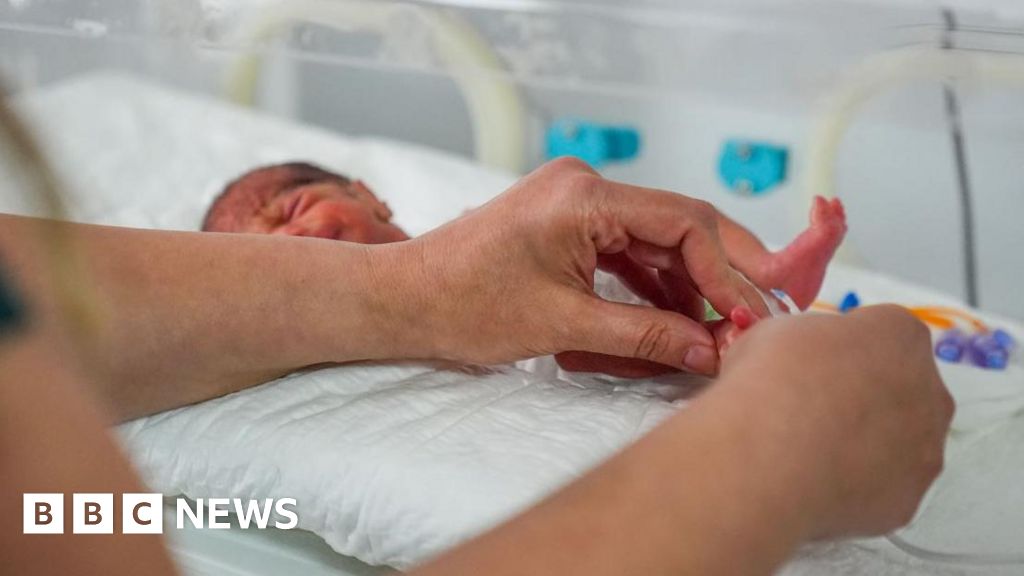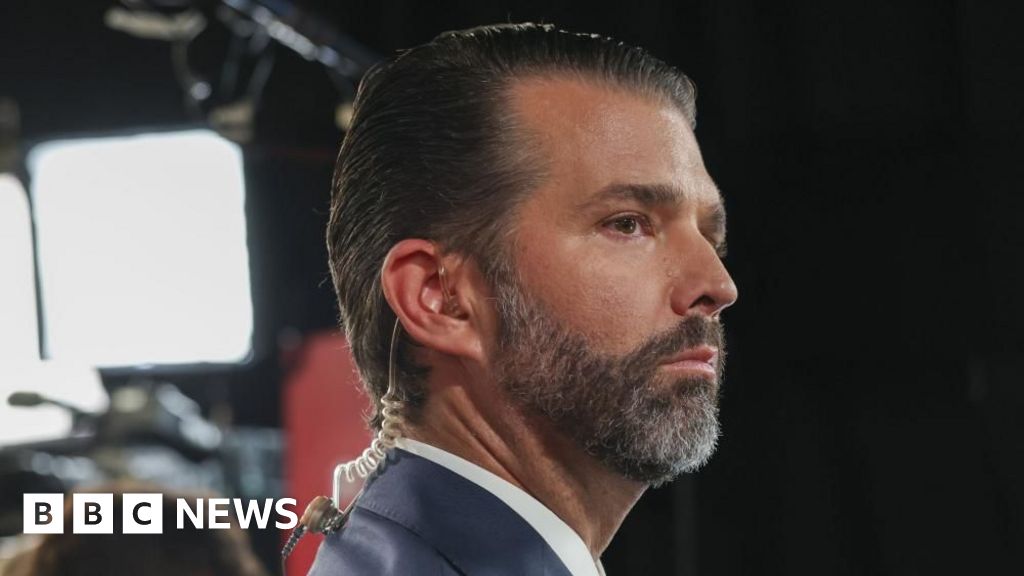ARTICLE AD BOX
By Blaire Toedte
BBC Monitoring, Miami team
 Image source, Martin Medina
Image source, Martin Medina
Gardner originally wanted to be a basektball player before he began his career as a Miami promoter
When Michael Gardner first arrived in Miami in the 1990s, black entrepreneurs and black culture faced discrimination and resistance across the bridge in glitzy Miami Beach, especially within the nightclub scene.
Thirty years later, the hip-hop party he hosts at the fabled Fontainebleau Hotel on the Beach, called LIV on Sunday, is world renowned.
In his new docu-series, Headliner, the super-promoter and businessman says Miami Beach was "zero per cent black" when he first arrived in 1991.
"The racism, trying to be accepted over there was tough, especially for me as a young black man," he says. "It became more or less me trying to navigate between both worlds."
Gardner did not always plan on a career as a nightlife promoter. "I wanted to be like Mike," he recalls, referring to basketball legend Michael Jordan. That dream was cut short while he was still at the University of Miami, after he missed curfew during an away game and was dropped.
Instead, Gardner set out on another journey, one that saw him attempt to overcome the initial resistance to the introduction of hip-hop culture in mainstream Miami.
His success did not come easily, but today he is one of the most respected promoters in in the city.
"If you have never heard of Gardner, that might not be through any fault of your own," noted the Miami Times. "Despite having his hand in many an important Miami stew, he's not a man of flagrant self-aggrandisement.
"He navigates the chaos of Miami after dark with an assured and soft-spoken confidence, a disposition forged from years of rigorous trial and error."
Image source, Getty Images
Image caption,Rapper Rick Ross pictured with Michael Gardner at the premiere of his docu-series Headliner
Gardner remembers the adversity he faced when he was first trying to break into the industry. "There is a sense in black men that [makes them want] to prove something, and that's what I went through on that Beach... it became my motivator."
Once homeless, living in the back of his cousin's barber shop, the would-be promoter's first party was a flop.
It did not help that Miami's booming nightlife scene was initially not welcoming to the black community, and especially not to a hip-hop themed night.
The city's glitz and glamour was, for years, restricted to Miami Beach, where clubs blasted house and pop music, and there was a stigma around the stereotype of black clubbing and dancing.
"It was noticeable as far as the divide and the racism and being accepted over there on the Beach," says Gardner. "There were certain clubs we weren't allowed to go to… or shall I say they weren't accepting.
"They weren't letting us in the club. They'd leave us out there for three, four hours just to get in the club. Without knowing a person's personality... I just wanted to go in and have a good time like a regular person."
Many of these same issues remain today. Last year, rapper Cardi B confronted bouncers at a top Miami club after a group of black partygoers told her they had been refused entry. The club denied this was the case, but the publicity re-ignited the debate around door policies in the city.
The two sides of the bridge
Headliner uses the motif of the bridges connecting mainland Miami to the beach to symbolise the divide between the real Miami, as experienced by the black community, and the glitz of Miami Beach. "I was aware of the two sides," he says.
Miami is broken up into enclaves of different peoples and cultures, some intentionally and some less so. For the black community, the fracture was intentional.
One clear example was the construction of Interstate-95 through the historic Overtown community during the 1950s and 60s, which created a fragmented black community in an area once dubbed the Harlem of the South. These urban enclaves within Miami still exist and shaped Gardner's experience.
He also refers to a time when entertainers like Sammy Davis Jr would perform at venues like the Fountainebleau, only to "have to leave the Beach and come to Overtown" because, as black performers, they were not allowed to stay at hotels on Miami Beach.
But things had changed by the early 2000s, when hip-hop had become an undeniable phenomenon. "[It] just became so dominant," Gardner says.
Image source, Martin Medina
Image caption,Gardner, pictured left at a screening of his documentary, says people connected to hip-hop because of the often grim reality reflected in its lyrics
He credits men like Luther "Luke" Campbell of the 2 Live Crew, who Gardner considers an "uncle", that came before him and fought for the acceptance of hip-hop and the inclusion of the black community in Miami. "To see the transition of the plight of the communities and then being able to be accepted through hip-hop… is something that resonates with me. It makes me smile."
For Gardner, the honesty of hip-hop music is what made it popular. "You're watching people get murdered, you're watching people doing drugs, they're living in a broken home... I think those stories in hip-hop were intriguing to people… [people are thinking] 'there's no way this is true'."
After years of hosting parties at nightclubs on the verge of going under, Gardner was invited to host LIV on Sunday in 2008. Unlike his past venues, the Fountainebleau hotel and the world famous LIV nightclub inside have continued to succeed.
"Fascinating", says Michael Gardner, smiling, when asked to describe LIV on Sunday. "Close your eyes and imagine the endless possibilities… the lights, the people, blaring music, the ambiance, it's a show."
"Those different stories, they kind of shaped my journey," Gardner says. Then he laughs: "I have a million of those stories."
"To give back to the community means everything to me," the promoter grins. He makes the distinction: "I need the people; the people don't need me." It is not like he is selling gasoline, he explains. "I'm just selling a good time, so I've always been indebted to the people."
Always with a smile, he explains "just to see the joy on people's faces" means everything. Many of his events do not generate a large degree of publicity, something he says does not bother him. "That's not what it's for."
Among his charitable work is the Overtown Music and Arts Festival, a free community event that attracts Grammy award-winning artists and provides hours of crafts, art and entertainment.
Gardner also hosts Pampering with a Purpose, which provides manicures, haircuts, massages - you name it - to local residents. "That moment, it takes a burden off of them... it gives them a moment of hope. There's no feeling like that."
"It's a diverse group of people [that benefit], it's just set in the black community because they're the ones who are the most in need."

 2 years ago
28
2 years ago
28








 English (US)
English (US)